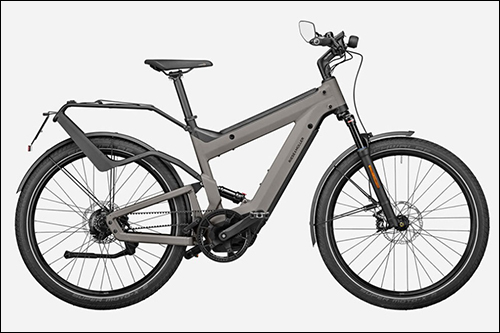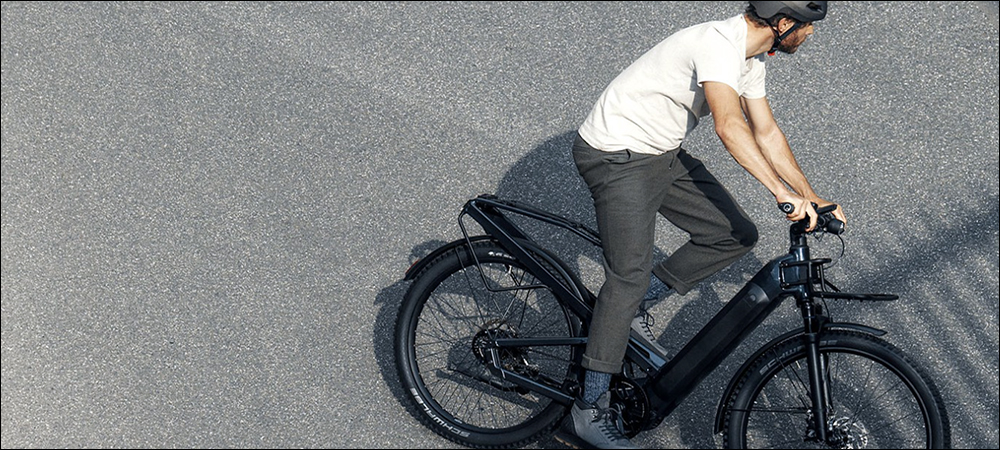Several businesses are piloting the latest version of NXP Semiconductors’ vehicle-to-everything (V2X) technology, designed to enable vehicles to communicate with their surroundings. The goal, according to the company, is to improve road safety by allowing drivers to identify pedestrians or other vehicles within their vicinity, or to form truck platoons that traverse the highway together following the lead vehicle’s speed and movements. This fall, European truck manufacturers completed testing of the technology for multiple makes and brands of trucks in a single connected system.
In addition, bicycle company Riese & Müller and NXP have collaborated to create an e-bike prototype to bring V2X-based data to cyclists on their smartphones by communicating with other V2X devices in local vehicles and infrastructure. The V2X communications technology consists of NXP’s chipset known as RoadLINK, which consists of an SAF5400 modem and an SXF1800 secure element, mounted on or built into vehicles, or carried or worn by pedestrians. The RoadLINK solution onboard unit transmits a unique ID number along with position, speed and direction of travel via dedicated short-range communications (DSRC) wireless networks. Other V2X devices can then calculate the distance between them.

Huanyu Gu
In general, DRSC is a one- or two-way short-range protocol, compliant with the IEEE 802.11 P protocol, which operates over the 5.9 GHz band of the RF spectrum. It is typically used for vehicle-to-vehicle (V2V) or vehicle-to-infrastructure (V2I) format. Throughout the past decade, NXP has offered and expanded its V2V solution to include V2X functionality, says Huanyu Gu, NXP’s product marketing manager for advanced driver-assistance systems. In that way, the system enables cars and trucks to communicate with other vehicles, as well as with road-work signs, traffic lights, bicycles and people on foot. For NXP, Gu says, the key message is how to protect vulnerable road users, not just vehicle owners.
The SAF5400 modem is used with the SXF1800 secure element, as well as an application processor such as NXP’s newly released i.MX 8XLite. The company’s MX family of applications can be employed for roadside infrastructure or as part of an on-vehicle system. The SAF5400 modem can typically receive and verify up to 2,000 messages per second, Gu reports, and has a latency of below 20 milliseconds. He notes that the software-defined algorithms on the chip deliver a long range for transmitted and received messages. The long communication range results from the high performance of the RoadLINK DSRC modem, Gu says, as well as an optimized V2X stack implemented by Cohda Wireless, and the DSRC 802.11p standard is designed and optimized for automotive use in high speed, dynamic environments.
During the past eight years, NXP has provided its technology for intelligent, connected mobility to Cadillac, Volkswagen and other companies, enabling drivers to detect the presence of other vehicles and thus protect lives and property. According to NXP, 1.3 million road traffic deaths occur each year worldwide, and the faster the traffic, the higher the fatality rate. When vehicles travel at 70 kilometers per hour (44 miles per hour), only one out of every 10 pedestrians survives a collision. The company notes that 90 percent of accidents are caused by human error.
Existing technologies being built into vehicles consist of radar, lidar or camera sensors. “We believe V2X is complementary to all of this,” Gu states. The system is designed to see around corners in non-line-of-sight scenarios, and it can enable handshakes with other devices used on roads—for instance, to coordinate a maneuver such as two vehicles merging into the same lane. Gu says the technology can be used as a smart-city solution, enabling vehicles to communicate with road signs and other infrastructure. What’s more, it can operate in weather conditions in which cameras are less effective.
One potential scenario in which the technology could provide a benefit might be a car breaking down on the side of a narrow road. The DSRC device could transmit a signal to approaching drivers at a distance of a kilometer or more, allowing sufficient time for them to avoid collisions. The technology can detect a V2X-participating passenger car in front of a bus. If that car’s driver were to suddenly hit the brakes, a driver behind the bus could be prepared to stop. It can also detect an approaching motorbike or pedestrian, as well as issue wireless alerts directly from roadside infrastructure, such as construction signage. Students and other pedestrians could carry V2X proximity tags.
This year, the technology has been demonstrated for smart-city applications in the city of Hamburg, Germany. These include the intelligent control of traffic lights to detect how fast vehicles move through intersections, as well as how heavy traffic is, based on communication between devices in vehicles and their counterpart technology reading transmissions in traffic lights. Data collected from the system is intended to enable better lighting controls according to traffic, and to thereby increase traffic flow and reduce emissions.
Truck platooning is a feature that has been piloted twice in Europe. A pilot known as Ensemble, led by a consortium of truck companies and completed in September 2021, tested the ability of a group of trucks to form a wirelessly connected and mutually controlled pack. A single truck is selected as the leader, and its driving systems—such as acceleration and braking—are wirelessly shared with other trucks in the platoon, each of which adjusts to match the lead vehicle’s settings. After a predetermined amount of time (two hours, for example), another truck can take over as the lead.
As the trucks follow each other at a close distance, the drivers remain in their vehicles but leave speed control up to the leader. This can reduce driver fatigue, Gu says, as well as minimize the distance between trucks, thereby increasing the efficiency of road usage. In addition, the aerodynamics can reduce fuel consumption due to less wind resistance. Gu estimates that fuel use can be reduced by 30 percent or more. This only works, he says, if communication latency is guaranteed. With DSRC, Gu notes, the reaction time—below three milliseconds—is shorter than it would be with cellular connectivity.
During the first phase of testing, the solution was designed to allow a new truck to join the platoon, or to adjust for another unconnected passenger car coming between them. The platoon depends on each truck’s built-in radar system to detect such actions and slow the vehicle’s speed. That adjustment is then shared with all other trucks via the V2X system. Once a driver leaves the platoon, the technology automatically returns to the original arrangement, with the designated leader setting the speed. The pilot’s main objective, Gu says, was to test the system’s reliability and safety with a mixture of truck brands.

Riese & Müller’s smart e-bike
Other technology solutions are in development as well. Riese & Müller’s smart e-bike, now in prototype, comes with RoadLINK V2X chipsets, along with radar to enhance the data being captured. The transmission can then be received by a cyclist’s smartphone, which could be mounted on the front of the bicycle. The bike utilizes data regarding surrounding road users to calculate distance differences and changes in real time, such as the presence of a car, and then displays a small road warning.
The configuration enables the e-bike to transmit data about its position, speed and direction of travel to other V2X-enabled vehicles within the vicinity that could pose a potential danger to the cyclist. The module calculates the distances between road users, as well as position changes, within seconds. In the event of a dangerous situation, both a cyclist and a car’s driver would receive a timely collision warning. The information could also be shared with other users, enabling them to view what the bike sees—a process known as collaborative perception. However, that feature is still under discussion by car consortiums.
For the system to be effective, Gu says, at least 25 percent of motorists or vehicles should adopt the technology. For that reason, NXP is currently focusing on expanding the use cases. For cars, the technology has been available since 2015, initially with Toyota in Japan, operating on the 716 MHz version of DSRC. In 2019, Volkswagen released the V2X system as well in its Golf model.
The technology will soon be deployed in Singapore as part of the country’s Electronic Road Pricing system. That nation’s government will provide the technology as a DSRC-enabled NXP onboard unit and roadside modules, enabled by RoadLINK modem chips mounted in vehicles and on infrastructure. The solution is aimed at allowing agencies to reduce traffic congestion and eventually developing value-added services such as relevant traffic advisories via the onboard unit.


